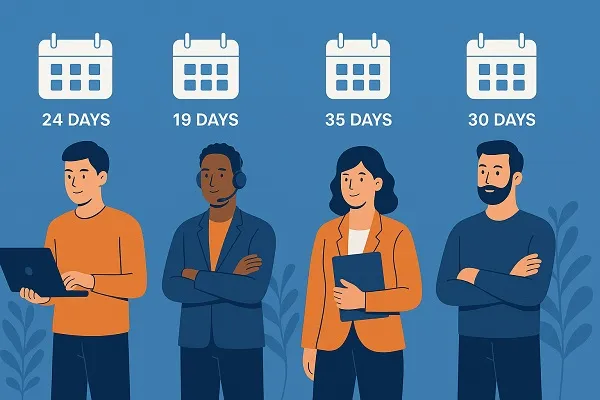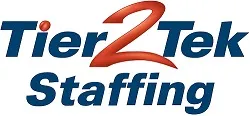Time-to-Fill Benchmarks for IT Roles give talent teams a reality check on how long it typically takes to open a requisition, run a hiring pipeline, and get an accepted offer. For technical positions—where demand is high and skills are specialized—strong benchmarks help you set expectations, staff projects on time, and spot bottlenecks before they blow up timelines.
This guide explains how to calculate time-to-fill, where benchmarks come from, realistic ranges by role, and practical tactics to reduce cycle time without sacrificing quality. Along the way we’ll use recruiting metrics you already track—pipeline speed, stage conversion, offer acceptance rate—and tie them to actions.
What “time-to-fill” actually measures
Time-to-fill (TTF) is the number of calendar days from approved requisition to accepted offer. It captures the real business wait time to seat a role.
Time-to-fill vs. time-to-hire vs. time-in-stage
- Time-to-hire: Candidate-centric; from first contact/application to accepted offer. Often shorter than TTF.
- Time-in-stage: Average days a candidate spends in each pipeline step (sourcing, screening, technical interview, onsite/virtual loop, offer).
- Why it matters: TTF reflects planning and capacity; time-to-hire reflects candidate experience; time-in-stage pinpoints the slowdown.
Simple formula:Time-to-fill = Offer acceptance date – Requisition approval date
Track both median and 75th percentile. The median shows typical performance; the 75th percentile reveals risk and tail delays that wreck delivery dates.
Why benchmarks matter in IT hiring
- Capacity planning: Forecast recruiter and interview panel load across quarters.
- Project delivery: Map staffing dates to sprint plans, release trains, and support SLAs.
- Stakeholder trust: Align hiring managers on realistic timelines by role and seniority.
- Continuous improvement: Compare your pipeline KPIs to market-like ranges and prioritize fixes.
Typical time-to-fill benchmarks by IT role

These ballpark ranges assume competitive pay, a clear job description, and a standard interview loop in mature talent markets. Seniority, location, niche tech stacks, and clearances can shift timelines meaningfully.
IT operations & support
- Help Desk / Service Desk: 20–35 days
- Desktop Support / Field Tech: 25–40 days
- Network Administrator: 30–45 days
- Systems Administrator (Windows/Linux): 30–45 days
Software engineering
- QA / Test Engineer: 30–45 days
- Front-End Engineer: 35–55 days
- Back-End / API Engineer: 40–65 days
- Full-Stack Engineer: 40–65 days
- Mobile Engineer (iOS/Android): 45–70 days
Data & analytics
- Data Analyst / BI Developer: 35–55 days
- Data Engineer: 45–70 days
- Machine Learning Engineer: 50–80 days
- Data Scientist: 50–80 days
Cloud, DevOps, and SRE
- DevOps Engineer: 50–75 days
- Site Reliability Engineer (SRE): 50–75 days
- Cloud Engineer (AWS/Azure/GCP): 50–75 days
- Cloud/Platform Architect: 55–85 days
Cybersecurity
- Security Analyst (SOC/IR): 40–60 days
- Security Engineer (AppSec, CloudSec): 55–85 days
- GRC / Compliance Specialist: 45–65 days
Leadership
- Engineering Manager: 55–80 days
- Director / Head of Engineering, Data, or Security: 65–95 days
- VP-level and above: 75–120 days
Tip: Track your own medians for each role family + level + modality (remote/hybrid/onsite). Those internal medians beat any external benchmark when you’re forecasting.
Factors that move time-to-fill up or down
Market and role dynamics
- Talent supply vs. demand for specific stacks (e.g., Go, Rust, Kubernetes, Snowflake).
- Clearances and compliance (e.g., FedRAMP, PCI, HIPAA, SOC2) add process steps.
- Onsite-only requirements shrink the funnel compared to remote/hybrid.
Compensation and brand
- Salary bands and equity ranges aligned with market reality.
- Employer brand and Glassdoor/G2 ratings influence response rates and offer acceptance.
Process and execution
- Sourcing channel mix: Direct outreach, referrals, job boards, niche communities.
- Interview loop complexity: Number of rounds, coding assessments, take-home tasks.
- Decision latency: Time from final interview to decision is a top driver of drop-off.
- ATS hygiene: Clear SLAs, status updates, and scheduling automation.
How to calculate time-to-fill correctly

Data hygiene rules
- Use a single requisition approval timestamp in your ATS as the start.
- Use offer acceptance (not verbal offer) as the end.
- Exclude on-hold days only if you consistently tag them; otherwise keep the noise symmetrical.
- Report median and 75th percentile by role family and seniority.
Supporting metrics you’ll want close by
- Sourcing-to-screen rate and screen-to-onsite rate
- Offer rate and offer acceptance rate
- Time-in-stage for: recruiter screen, technical screen, panel/loop, offer/close
- Candidate dropout reasons (comp, timing, role clarity, process length)
Building your own benchmarks
Segment first, then compare
- Role family: Support, Software, Data, Cloud/DevOps/SRE, Security, Leadership.
- Seniority: Junior, Mid, Senior, Staff/Principal, Manager+.
- Location/modality: Remote, Hybrid, Onsite; geo region if onsite.
- Critical constraints: Clearance, after-hours support, on-call rotations.
Set baselines
- Pull the last 12–24 months of filled roles.
- Remove hires with unique blockers (e.g., a six-week headcount freeze) if they’re outliers.
- Calculate median and P75 per segment, then convert to simple SLA targets.
Example SLA targets
- Software Engineer (Senior, remote): Target 55 days TTF (P75 ≤ 65)
- Help Desk (onsite): Target 30 days TTF (P75 ≤ 35)
- Security Engineer (cloud, remote): Target 70 days TTF (P75 ≤ 85)
Pipeline SLAs that shrink time-to-fill
Stage-by-stage goals (calendar days)
- Intake to live posting: ≤ 2 days
- Sourcing kickoff to first slate: 3–5 days
- Apply to recruiter screen: ≤ 3 days
- Recruiter screen to technical screen: ≤ 4 days
- Technical screen to panel/loop: ≤ 7 days
- Final interview to decision: ≤ 2 days
- Decision to written offer: ≤ 1 day
- Offer acceptance to start date: role-dependent; track separately as time-to-start
Adopt a “48-hour rule” for feedback after any interview. Most drift accumulates here.
Practical ways to reduce time-to-fill (without lowering the bar)

Tighten the top of funnel
- Write stack-specific job descriptions with must-haves vs. nice-to-haves.
- Add a calibrated sourcing brief: target companies, projects, repos, certifications.
- Use talent communities and referrals early; pre-brief employees with message templates.
Compress interviews, keep rigor
- Replace sequential steps with a consolidated loop (same day or two half-days).
- Swap long take-homes for a work-sample discussion using anonymized code or runbooks.
- Standardize structured interviews with anchored rubrics to speed decisions.
Accelerate scheduling and decisions
- Auto-schedule via your ATS; protect panelists’ blocks weekly.
- Hold a same-day debrief with a decider present; document yes/no plus rationale.
- Pre-clear comp bands and offers so you can turn written offers within 24 hours.
Compete on candidate experience
- Give a one-page interview guide describing stages, evaluators, and timeline.
- Share environment details (e.g., CI/CD, observability stack, on-call cadence).
- Offer async options when possible for coding or system design.
Widen the qualified pool
- Consider skills-based hiring with short bridge training for adjacent stacks.
- Open to remote within time zones to unlock more candidates with minimal coordination cost.
- Partner with hiring managers on must-have vs. trainable criteria.
Dashboards and KPIs to keep you honest
Core recruiting metrics
- Time-to-fill (median & P75) by role family, level, and modality
- Time-to-hire to diagnose candidate-side speed
- Stage conversion rates and time-in-stage heatmap
- Offer rate and acceptance rate (by comp band and location)
- Source-of-hire performance: response rate, quality, and speed
Operational signals
- Aging reqs (days open > target) with reason codes
- Interviewer load (hours/week) vs. SLA adherence
- Scheduling latency (days to next event) from ATS timestamps
- Drop-off reasons categorized: comp, timing, role clarity, process burden
Set alerts for reqs trending beyond P75 and stages exceeding SLA. Share weekly with hiring managers to create shared accountability.
Sample plans for common targets

Hitting a 30–35 day target (Help Desk, Desktop Support)
- Launch intake with a calibrated JD and referral push on Day 0–1.
- First candidate slate by Day 3–4; same-week recruiter + hiring manager screens.
- One compressed technical session (practical troubleshooting) by Day 7–10.
- Decision by Day 12–14; written offer within 24 hours; acceptance by Day 15–18.
- Maintain a bench of pre-qualified candidates to backfill quickly.
Hitting a 45–60 day target (Software Engineer, Data Engineer)
- Define technical bar and rubric up front; share sample questions with panelists.
- Use sourcing sprints in Week 1 and Week 2; drive 6–8 qualified screens/week.
- Combine system design + coding into a single loop in Week 3–4.
- Decision and comp calibration by next business day; offer within 24 hours.
- Pipeline health rule: ≥ 3 finalists by Day 30 or escalate scope/comp/channel mix.
Hitting a 65–90 day target (Security Engineer, Architect, Manager+)
- Pre-align comp bands and sign-on guardrails to minimize back-and-forth.
- Start passive outreach early; expect longer notice periods and counteroffers.
- Add exec panel and stakeholder alignment in a single day if possible.
- Keep exec calendar holds reserved weekly to avoid slip.
Using benchmarks in workforce planning
Tie your time-to-fill benchmarks to headcount plans and delivery roadmaps. If your SRE median is 60 days and you need four SREs for Q4 reliability work, your reqs must open by early Q3 to avoid risk. When Finance or PMO challenge dates, show historical medians and P75 to justify the plan—or request scope/comp adjustments.
Common pitfalls to avoid
- Overfitting to global averages: Always compare to your own medians first.
- Counting business days: Candidates live in calendar time; keep it consistent.
- Unbounded take-home tests: They inflate time-in-stage and hurt equity.
- Decision drift: Every extra day post-interview reduces acceptance odds.
- Ignoring offer acceptance rate: Slow decisions with low acceptance are double pain.
A solid time-to-fill benchmark for each IT role helps you forecast, staff projects, and keep hiring managers aligned. Start with your internal medians, pressure-test them against the ranges above, and then operationalize with clear stage SLAs, structured interviews, and rapid decisions. When you measure the right recruiting KPIs and act on them weekly, your pipelines move faster, your acceptance rate rises, and your teams get the talent they need when they need it.
Content reviewed and published by Tier2Tek Staffing Editorial Team .

